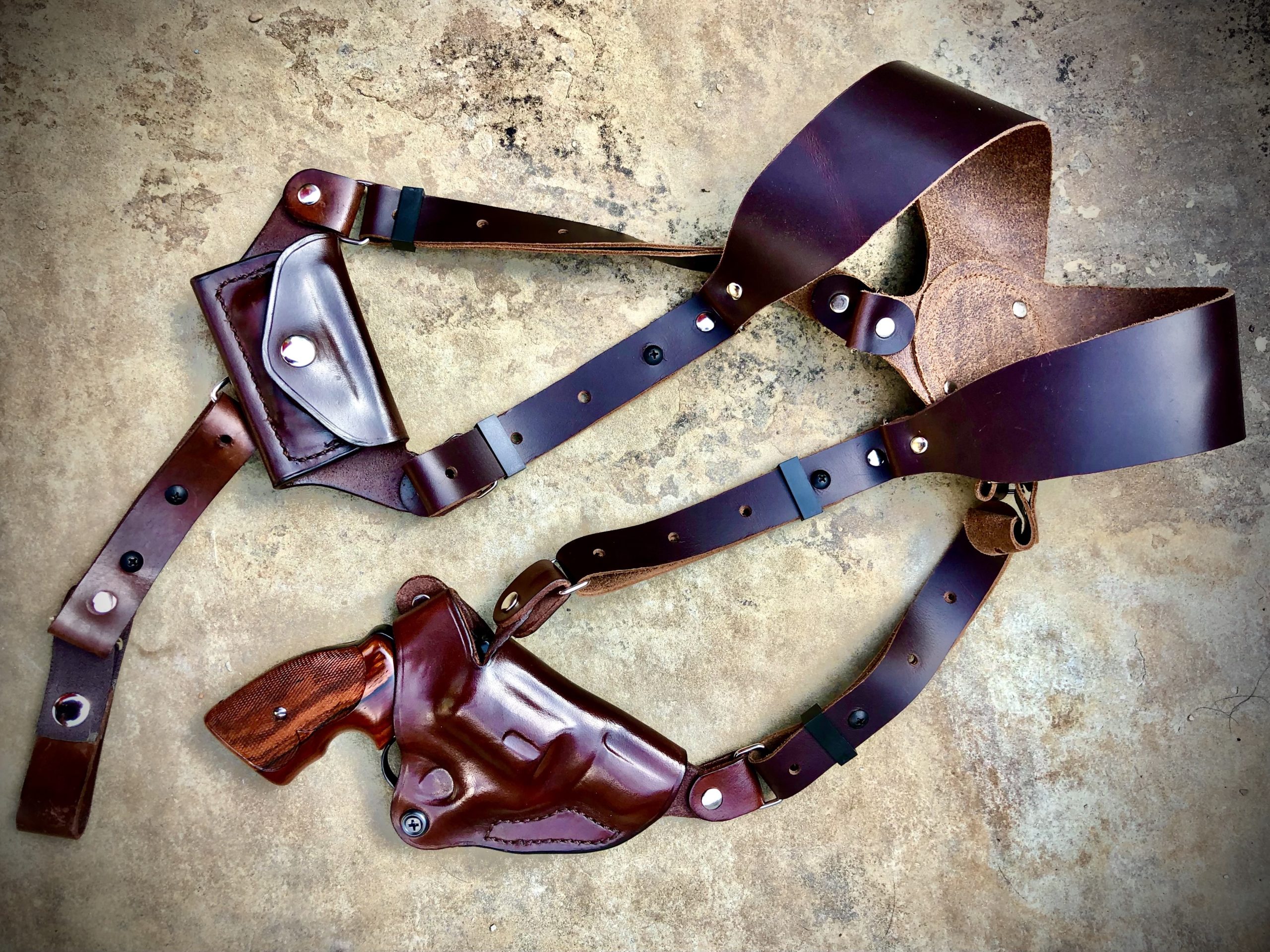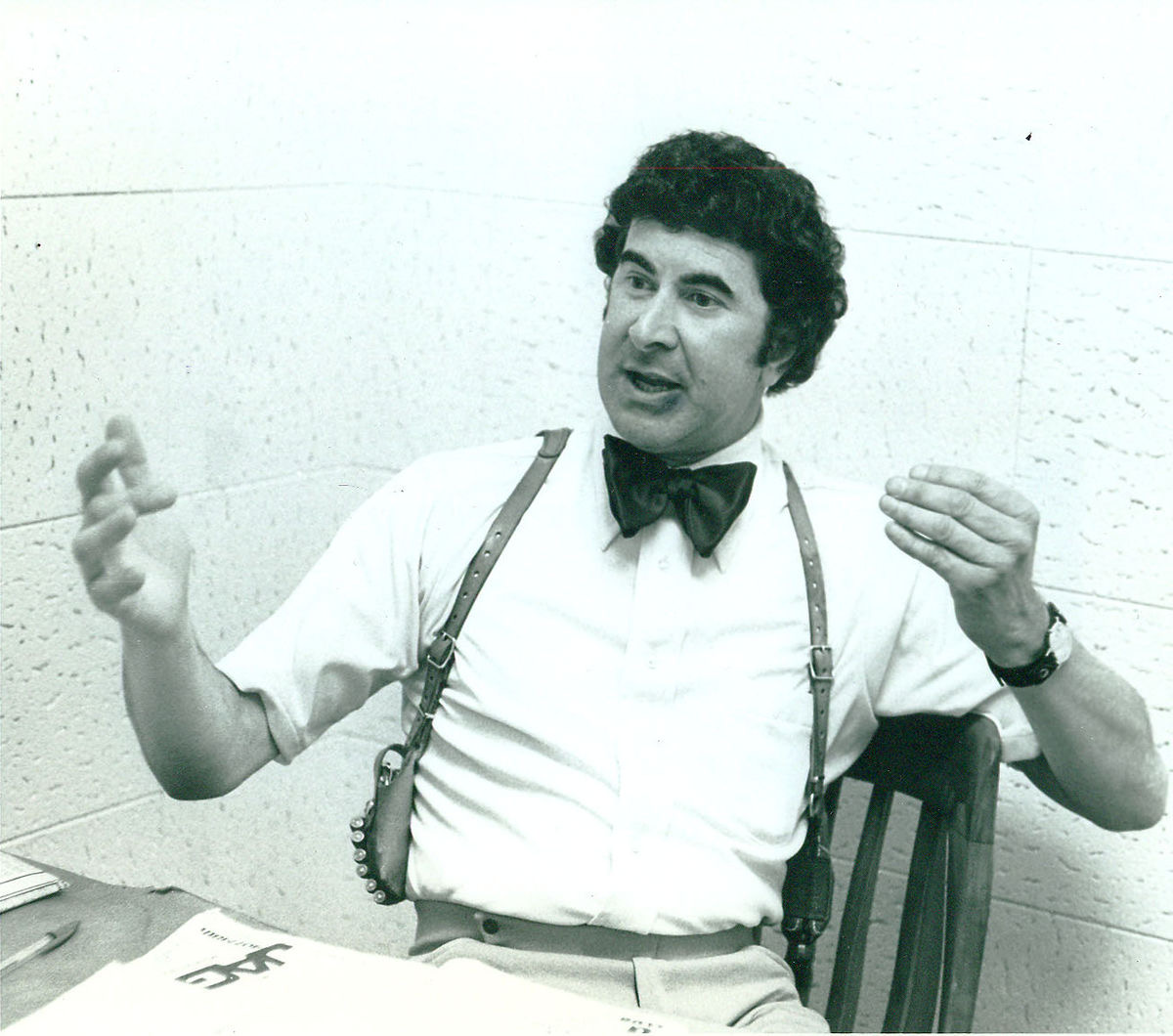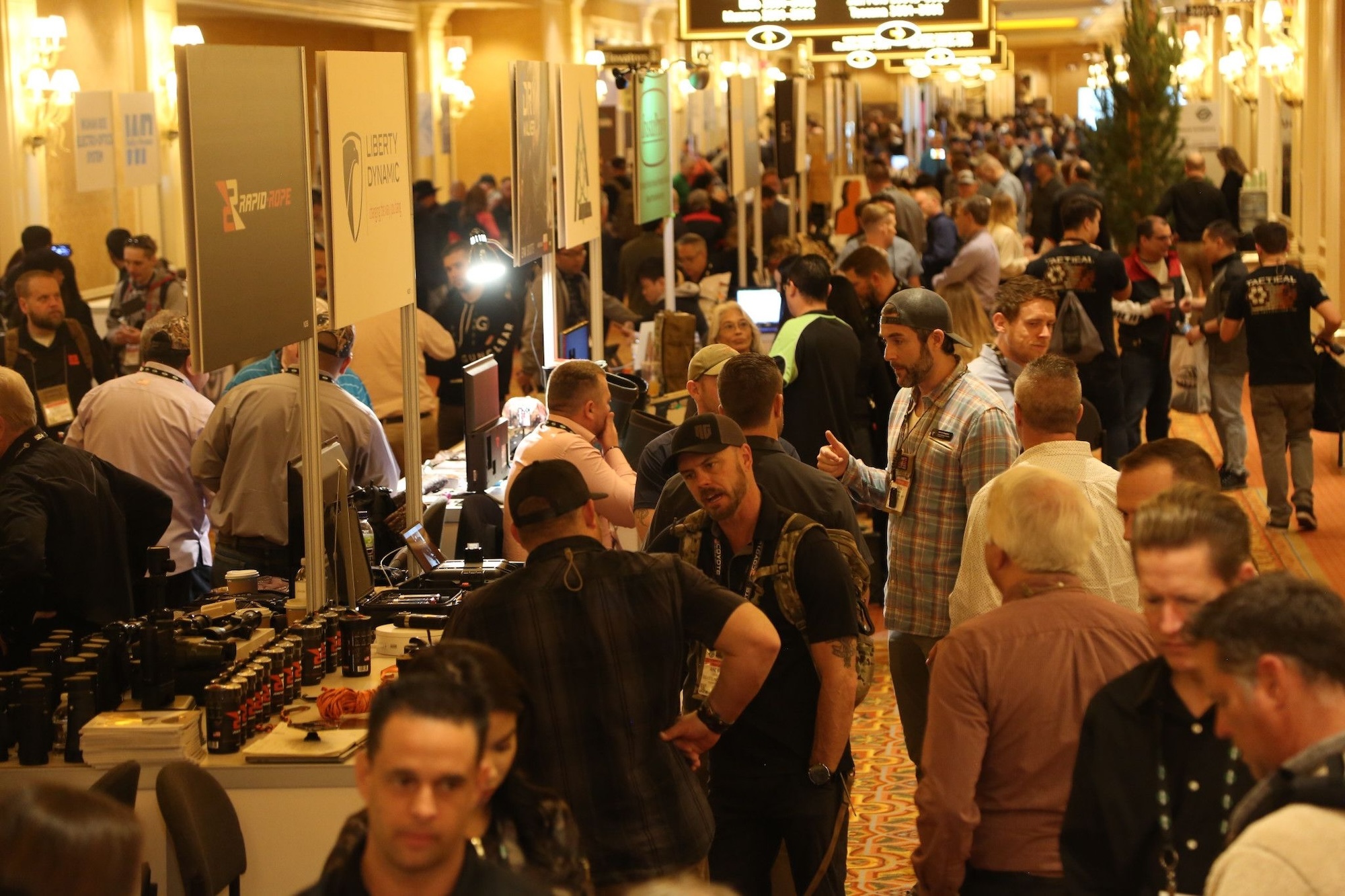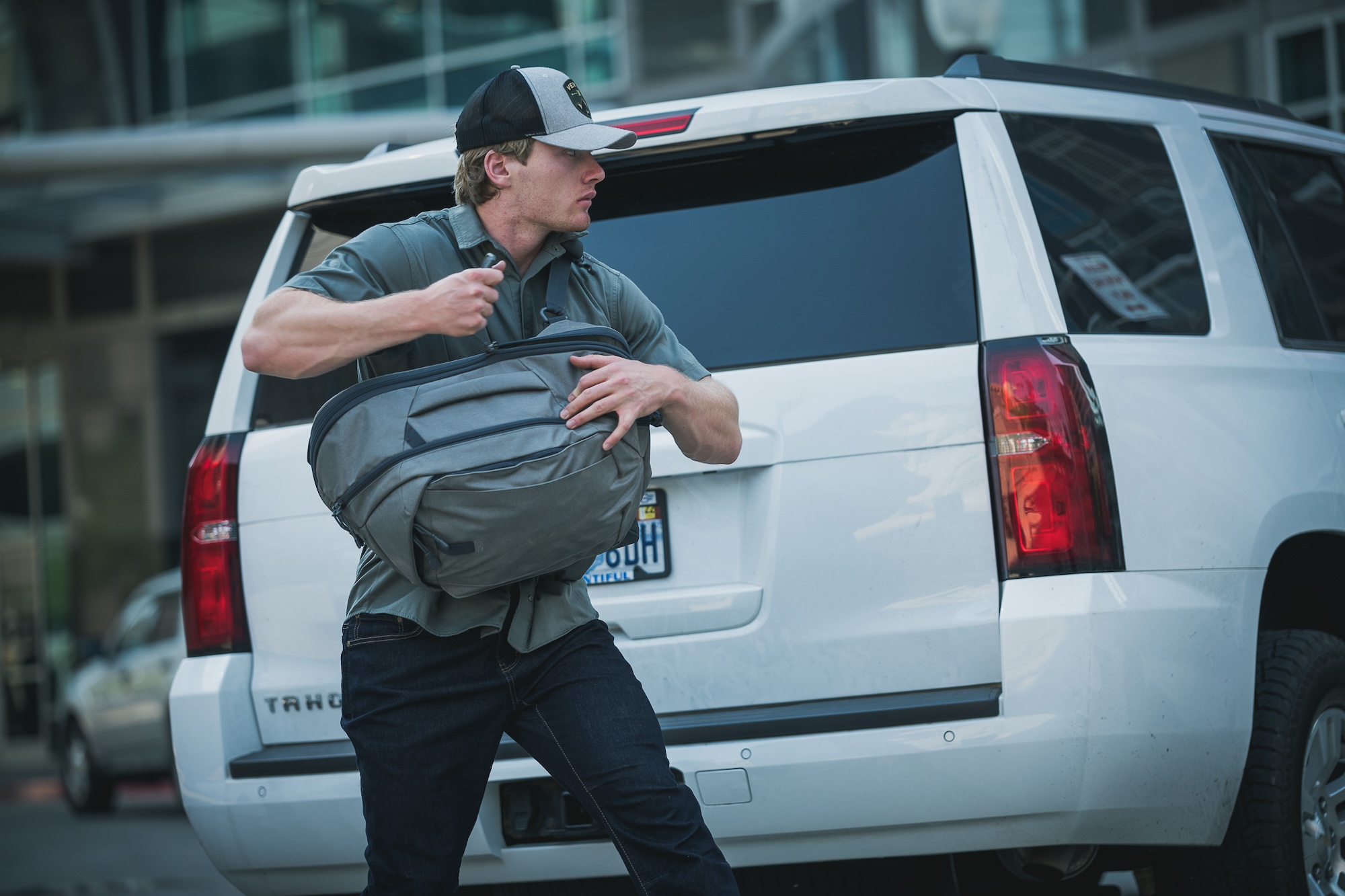
sh_feature
As a generation X founding member, I grew up on many of the classic cop shows, and more importantly, I was addicted to Miami Vice from the first episode. While we should not use TV and movies to select our gear, the fact is that Hollywood is very influential in the firearms industry. Growing up with Dirty Harry and Bullitt to John McLane in Die Hard, the classic shoulder holster played a prominent role in the carry system of the lead actors. In Miami Vice, the original Ted Blocker and later the Jack Ass/Galco shoulder holster worn by Sonny Crockett set a new standard trend in that era. This popularized the horizontal shoulder holster – that used offside magazine pouches to balance it – with the public.
What is lost with the Hollywood holsters is that their use was based on reality. The style of a shoulder holster where the primary firearm was balanced on the opposite side with support gear likely originated with an East Coast cop and holster maker Mike Taurisano in the mid-1960s. It started with a holster for a Vietnam Pilot for two Model 10s. Mike found that if he built offside pouches for magazines and handcuffs attached to a full harness, it would offset the gun weight for off-duty or undercover work, especially when they did not wear a belt. Characters in both Bullitt and Dirty Harry were based on legendary San Francisco Homicide Detective Dave Toschi. Toschi was known for his dress style with his signature bow ties and his upside-down shoulder rig for his revolver with spare ammunition and cuffs carried on the opposite side.

San Francisco Detective Dave Toschi and his distinctive shoulder holster was the inspiration for
both Bullitt and Dirty Harry.
This carry method goes back to the 1800s but found a niche with the transition from horses to vehicles as primary modes of transportation and the growth of modern towns and cities. Openly carrying firearms has never been socially acceptable in dense urban centers.

The off-side of Dave Toschi’s shoulder rig shows the handcuffs and spare ammunition to offset the revolver’s weight on the opposite side.
The shoulder holster in various styles fit well for concealing firearms with the types of clothing worn in the past.
Legendary lawman Frank Hamer, one of the most accomplished gunfighters in American history, was a good example. While Hamer became a household name because of his efforts to rid the planet of Bonnie & Clyde, he also had decades of experience in armed conflict with serious criminals that often ended in gunfire. Frank Hamer was usually armed with his constant companion “Old Lucky,” a 4 ¾” Colt Single Action Army in .45 Colt. When Hamer believed he was headed to trouble, he supplemented Old Lucky with a .44 caliber 6.5″ S&W Triple Lock carried in a shoulder holster under his suit jacket. He used that gun to win a gunfight where he and his family were ambushed in Sweetwater, Texas.
Many squared-away shooters used shoulder rigs effectively. I started carrying one in the mid-’80s, working in a police equipment store in San Diego that sold a lot of firearms. I was a college student then, and Southern California is not a mecca of legal concealed carry. A proto-type Galco Miami Classic rig carried my Sig P-226 with an offside magazine pouch for a pair of 20-round extended magazines; it later became a catalog item. That rig allowed me to conceal my primary pistol easily, with reloads, when working in the store or in other situations where I could be legally armed. I could easily remove the rig from under an unbuttoned shirt if I had to leave the store and go where it would have been illegal to carry. This was the same attraction for many plainclothes investigators who could remove their rig in the office but easily don it with a primary firearm, a full complement of reloads, and often handcuffs if they left their desks.
I know multiple Cold War studs who all used shoulder holsters extensively, with Browning High Powers or Colt 1911s. These rigs were also very popular with overseas operatives for carrying. The shoulder holster was a great option to take the handgun’s weight off the hips, when support gear was carried, and move that weight to the shoulders. These holsters, combined with a small ankle revolver, were the mark of a serious professional in many circles. Even Col. Jeff Cooper was often photographed using a vertical shoulder holster for his 1911. Cooper was relatively proficient in its use.
I had a discussion on this subject with arguably one of the most experienced people in the country in carrying firearms in very non-permissive overseas environments.
The discussion looked at two very distinct factors. The first is the change in dress style where “dressing like a grown-up” is no longer required in many areas of society as it once was. Instead of daily wear, suits are now considered more formal attire. A collared shirt and khakis replaced them as business attire. Modern climate controls have made winter jackets something that is removed in the workplace. When suits or blazers are worn, they are often removed indoors instead of when you reach certain temperatures. The change to less structured and less-traditional dress styles makes holsters that require a proper cover garment limited in their practical use.
The other issue that sounded the death knell is how firearms training is conducted and range rules.
Shoulder holsters were deemed “unsafe” by many sports shooting organizations. This decision filtered down to most ranges and training facilities that banned shoulder holsters and other solid carry options. Rather than spending time and effort to figure out a way to conduct safe and efficient training to use various shoulder holsters, it was easier to ban them.
This problem was compounded by the proliferation of some terrible and unsafe designs often made with cheap synthetic materials that cannot retain a firearm properly. The designs of these sub-standard holsters created safety hazards.
When used by competent and well-trained professionals, quality shoulder holsters fill a crucial role.
















